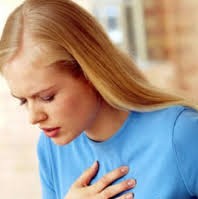Kidney Failure, Causes, Symptoms, Foods to Avoid and to Add to Diet

kidneys are very small but powerful bean-shaped organs that perform many important functions. They are responsible for filtering waste products and producing urine, releasing hormones that regulate blood pressure and also balancing fluids in the body.
There are various ways in which these vital organs can become damaged, as a matter of fact, Kidney disease is a common problem affecting about 10% of the world’s population. There are many risk factors for kidney disease. The most common are uncontrolled diabetes and high blood pressure. Alcoholism, heart disease, hepatitis C virus and HIV infection are also risk factors for kidney disease.
However, obesity, smoking, genetics, gender, and age can also increase the risk. Also, uncontrolled blood sugar and high blood pressure cause damage to blood vessels in the kidneys, reducing their ability to function at an optimal level. When the kidneys aren’t working properly, waste builds up in the blood, including waste products from food. Dietary restrictions vary depending on the level of kidney damage.
For instance, people in the early stages of kidney disease have different restrictions than those with kidney failure. For most people with advanced kidney disease, it’s important to follow a kidney-friendly diet to avoid build-up of certain chemicals or nutrients in the blood.
This diet is often referred to as a renal diet. For those with chronic kidney disease, the kidneys cannot adequately remove excess sodium, potassium, and phosphorus. Therefore, they are at higher risk of elevated blood levels of these minerals.
A kidney-friendly diet, or a “renal diet,” usually includes limiting sodium and potassium to 2,000 mg per day and limiting phosphorus to 1,000 mg per day.
Sodium: Sodium is found in many foods and a major component of table salt. Damaged kidneys can’t filter out excess sodium, causing its blood levels to rise.
Potassium: Potassium plays many critical roles in the body, but those with kidney disease need to limit potassium to avoid dangerously high blood levels.
Phosphorus: Damaged kidneys can’t remove excess phosphorus, a mineral in many foods. High levels can cause damage to the body.
Protein: is another nutrient that people with kidney disease may need to limit, as waste products from protein metabolism can’t be cleared out by damaged kidneys. Damaged kidneys may also have trouble filtering the waste products of protein metabolism.
However, those with end-stage renal disease undergoing dialysis have an increased protein requirement. If you have kidney disease, your health care provider will determine the best diet for your individual needs.
CAUSES OF KIDNEY FAILURE
The cause of kidney failure is the accumulated damage which had gradually crept into the kidney over time, and once any harm comes to the kidney they would not function properly most especially as the damage gets worst. Kidney failure is the last (most severe) stage of chronic kidney disease. This is why kidney failure is also called end-stage renal disease, or ESRD for short. There are other causes of kidney failure and the most common of them all is “Diabetes” which is followed by “High blood pressure”. Other problems that can cause kidney failure include:
- Autoimmune diseases, such as lupus and IgA nephropathy
- Genetic diseases (diseases you are born with), such as polycystic Kidney disease
- Nephrotic syndrome
- Urinary tract problems
Sometimes the kidneys can stop working very suddenly (within two days). This type of kidney failure is called “Acute Kidney Injury” or acute renal failure. Common causes of acute renal failure include:
- Heart attack
- Illegal drug use and drug abuse
- Not enough blood flowing to the kidneys
- Urinary tract problems
This type of kidney failure is not always permanent. Your kidneys may go back to normal or almost normal with treatment and if you do not have other serious health problems. Having one of the health problems that can lead to kidney failure does not mean that you will definitely have kidney failure.
Symptoms of Chronic Kidney Disease
Chronic kidney disease (CKD) usually gets worse slowly, and symptoms may not appear until your kidneys are badly damaged. In the late stages of CKD, as you are nearing kidney failure (ESRD), you may notice symptoms that are caused by waste and extra fluid building up in your body. Some of the symptoms of CKD are;
- Itching
- Muscle cramps
- Nausea and vomiting
- Not feeling hungry
- Swelling in your feet and ankles
- Too much urine (pee) or not enough urine
- Trouble catching your breath
- Trouble sleeping
If your kidneys stop working suddenly (acute kidney failure), you may notice one or more of the following symptoms:
- Abdominal (belly) pain
- Back pain
- Diarrhea
- Fever
- Nosebleeds
- Rash
- Vomiting
Having one or more of any of the symptoms above may be a sign of serious kidney problems. If you notice any of these symptoms, you should contact your doctor right away.
FOODS TO AVOID WHEN YOU HAVE BAD KIDNEYS

There are different foods one should exclude from their diets when they have bad kidneys such as;
AVOCADOS
Avocados are often touted for their many nutritious qualities, including their heart-healthy fats, fiber, and antioxidants. Avocados are usually a healthy addition to one’s diet, but individuals with kidney disease may need to avoid them. This is because avocados are a very rich source of potassium. One cup i.e. 150 grams of avocado provides a whopping 727 mg of potassium.
That’s double the amount of potassium than a medium banana provides. Avocados should be avoided on a renal diet due to their high potassium content. One cup of avocado provides nearly 37% of the 2,000 mg potassium restriction.
BANANAS
Bananas are known for their high potassium content. While they’re naturally low in sodium, one medium banana provides 422 mg of potassium. It may be difficult to keep your daily potassium intake to 2,000 mg if a banana is a daily staple.
Unfortunately, many other tropical fruits have high potassium contents as well. Pineapples, for instance, contain substantially less potassium than other tropical fruits and can be a more suitable alternative.
BROWN RICE
One cup of cooked brown rice contains 150 mg of phosphorus and 154 mg of potassium, while one cup of cooked white rice contains only 69 mg of phosphorus and 54 mg of potassium. You may be able to fit brown rice into a renal diet, but only if the portion is controlled and balanced with other foods to avoid excessive daily intake of potassium and phosphorus. Bulgur, buckwheat, pearled barley, and couscous is nutritious, lower-phosphorus grains that can make a good substitute for brown rice.
CANNED FOODS
Canned foods, such as soups, vegetables, and beans, are often purchased because of their low cost and convenience. However, most canned foods contain high amounts of sodium, as salt is added as a preservative to increase its shelf life. Because of the amount of sodium found in canned goods, it’s often recommended that people with kidney disease avoid or limit their consumption. Choosing lower-sodium varieties or those labeled “no salt added” is typically best.
Additionally, draining and rinsing canned foods, such as canned beans and tuna, can decrease the sodium content by 33–80%, depending on the product. Canned foods are often high in sodium. Avoiding, limiting or buying low-sodium varieties is likely best to reduce your overall sodium consumption.
DARK- COLOURED COLAS
Many food manufacturers add phosphorus during the processing of food and beverages to enhance flavor, prolong shelf life and prevent discoloration. In addition to the calories and sugar that colas provide, they also contain additives that contain phosphorus, especially dark-colored colas.
Additive phosphorus can typically be found in a product’s ingredient list. However, food manufacturers are not required to list the exact amount of additive phosphorus on the food label.
This added phosphorus is much more absorbable by the human body than nature, animals or plant-based phosphorus.
Unlike natural phosphorus, phosphorus in the form of additives is not bound to protein. Rather, it’s found in the form of salt and highly absorbable by the intestinal tract.
Dark-colored colas should be avoided on a renal diet because they contain phosphorus in its additive form, which is highly absorbable by the human body.
WHOLE – WHEAT BREAD
Often for healthy individuals, whole-wheat bread is usually recommended over refined, white flour bread. Whole-wheat bread may be a more nutritious choice, mostly due to its higher fiber content. However, white bread is usually recommended over whole-wheat varieties for individuals with kidney disease.
This is because of its phosphorus and potassium content. The more bran and whole grains in the bread, the higher the phosphorus and potassium contents.
For example, a 1-ounce 30-gram serving of whole-wheat bread contains about 57 mg of phosphorus and 69 mg of potassium. In comparison, white bread contains only 28 mg of both phosphorus and potassium.
Note:
Most bread and bread products, regardless of being white or whole wheat, also contain relatively high amounts of sodium. It’s best to compare the nutrition labels of various types of bread, choose a lower-sodium option, if possible, and monitor your portion sizes.
SUMMARY
The high-sodium, high-potassium and high-phosphorus foods listed above are likely best limited or avoided.
Following a renal diet can seem daunting and a bit restrictive at times. However, working with your healthcare provider and a renal dietitian can help you design a renal diet specific to your individual needs.
BEST FOODS FOR PEOPLE WITH KIDNEY PROBLEM
Just as there are foods to avoid in the diest of one suffering from a kidney problem, so also there are foods advisable to add to their diets. Below are a few of them.
BUCKWHEAT
Buckwheat is highly nutritious, providing a good amount of B vitamins, magnesium, iron and fiber. It is also a gluten-free grain, making buckwheat a good choice for people with celiac disease or gluten intolerance. A half cup i.e. 84 grams of cooked buckwheat contains 3.5 mg of Sodium, 74 mg of Potassium and 59 mg of Phosphorus.
CABBAGE
Cabbage belongs to the vegetable family and it has vitamins, minerals, and powerful plant compounds. It is a great source of vitamin K, vitamin C, and many B vitamins. Furthermore, it provides insoluble fiber, a type of fiber that keeps your digestive system healthy by promoting regular bowel movements and adding bulk to stools. Plus, it’s low in potassium, phosphorus, and sodium.
One cup i.e. 70 grams of shredded cabbage contains 113mg of Sodium, 119 mg of Potassium and 18 mg of Phosphorus.
EGG WHITES
Although egg yolks are very nutritious, they contain high amounts of phosphorus, making egg whites a better choice for people following a renal diet. Egg whites provide a high-quality, kidney-friendly source of protein. Not to mention, they are an excellent choice for people undergoing dialysis treatment, as they have higher protein needs but need to limit phosphorus. Two large egg whites i.e. 66 grams contains 110 mg of Sodium, 108 mg of Potassium and 10 mg of Phosphorus.
GARLIC
People with kidney problems are advised to limit the amount of sodium in their diet, including added salt. Garlic provides a delicious alternative to salt, adding flavor to dishes while providing nutritional benefits. It’s a good source of manganese, vitamin C and vitamin B6 and contains sulfur compounds that have anti-inflammatory properties.
Three cloves i.e. 9 grams of garlic contain 1.5 mg of Sodium, 36 mg of Potassium and 14 mg of Phosphorus.
OLIVE OIL
Olive oil is a healthy source of fat and phosphorus-free, making it a great option for people with kidney disease. The majority of fat in olive oil is a monounsaturated fat called oleic acid, which has anti-inflammatory properties. What’s more, monounsaturated fats are stable at high temperatures, making olive oil a healthy choice for cooking. One ounce i.e. 28 grams of olive oil contains 0.6 mg of Sodium, 0.3 mg of Potassium and 0 mg of Phosphorus.
ONIONS
Onions are excellent for providing sodium-free flavor to renal-diet dishes. Reducing salt can be difficult for many patients, making finding flavorful salt alternatives compulsory. Sautéeing onions with garlic and olive oil adds flavor to dishes without compromising your kidney health.
Onions are high in vitamin C, manganese and B vitamins and contain prebiotic fibers that help keep your digestive system healthy by feeding beneficial gut bacteria.
One small onion i.e. 70 grams contains 3 mg of Sodium, 102 mg of Potassium and 20 mg of Phosphorus.
PINEAPPLE
Many tropical fruits like oranges and bananas are very high in potassium. Luckily, pineapple makes a sweet, low-potassium alternative for those with kidneys problems. Pineapple is rich in fiber, B vitamins, manganese and bromelain, an enzyme that helps reduce inflammation. One cup i.e. 165 grams of pineapple chunks contains 2 mg of Sodium, 180 mg of Potassium and 13 mg of Phosphorus.
Limited protein intake is necessary for some people with kidney issues, but providing the body with an adequate amount of high-quality protein is vital for health. Skinless chicken breast contains less phosphorus, potassium, and sodium than skin-on chicken. When shopping for chicken, choose fresh chicken and avoid pre-made roasted chicken, as it contains large amounts of sodium and phosphorus. Three ounces i.e. 84 grams of skinless chicken breast contains 63 mg of Sodium, 216 mg of Potassium and 192 mg of Phosphorus.
SUMMARY
While following a renal diet can feel restrictive at times, remember to always discuss your food choices with your healthcare provider to ensure that you are following the best diet for your individual needs. There are plenty of delicious foods that fit into a healthy, well-balanced and kidney-friendly meal plan.



